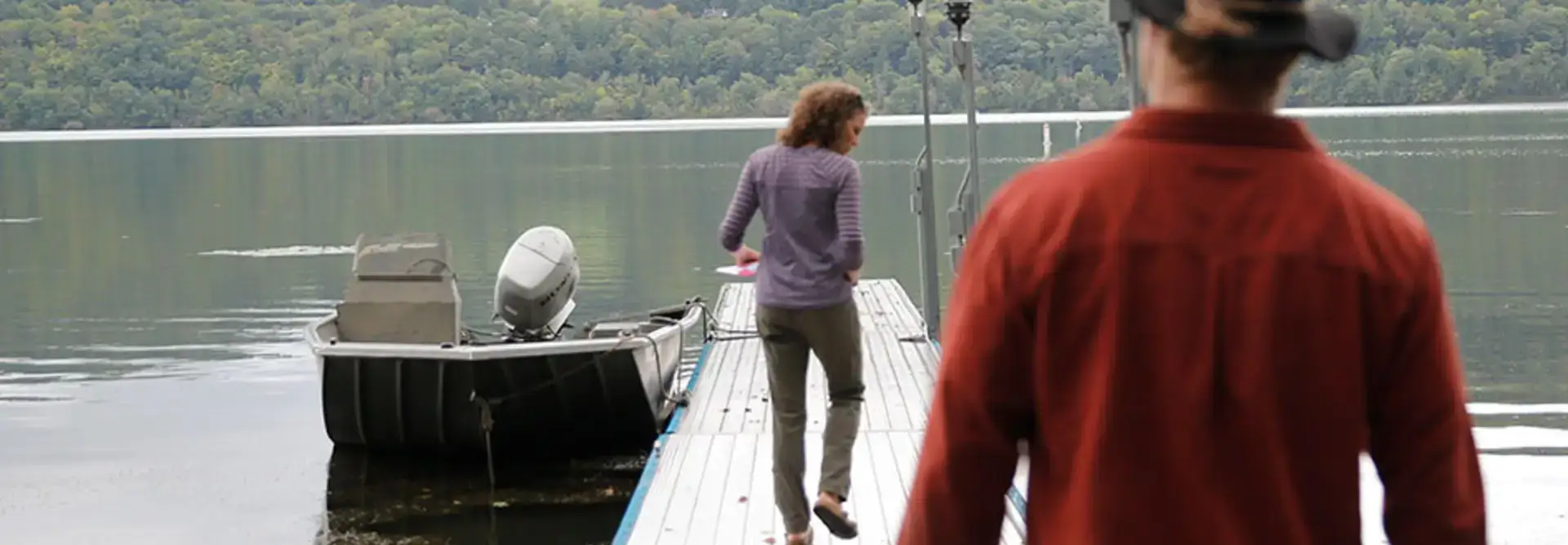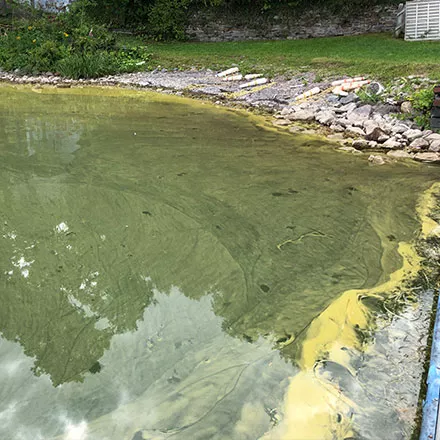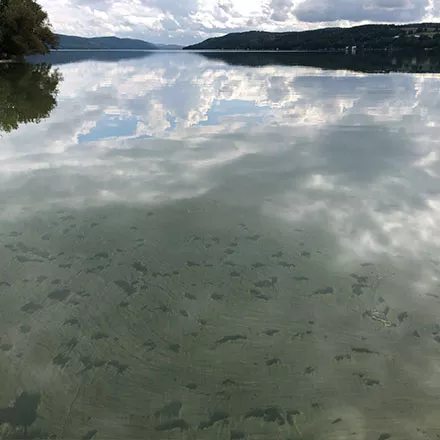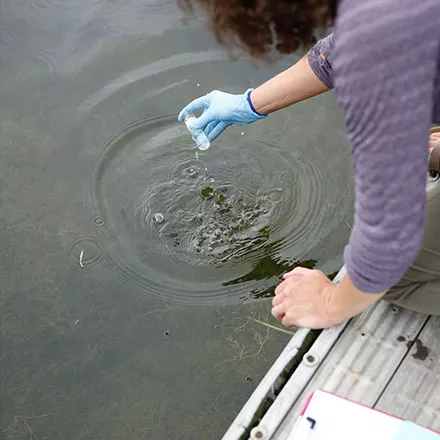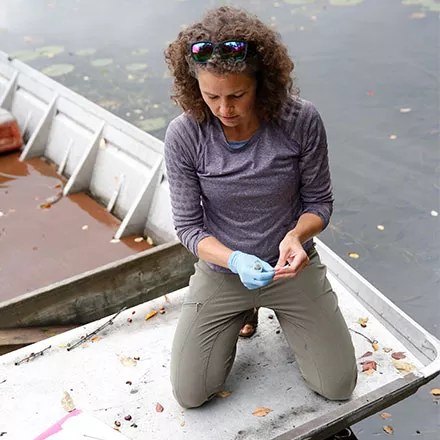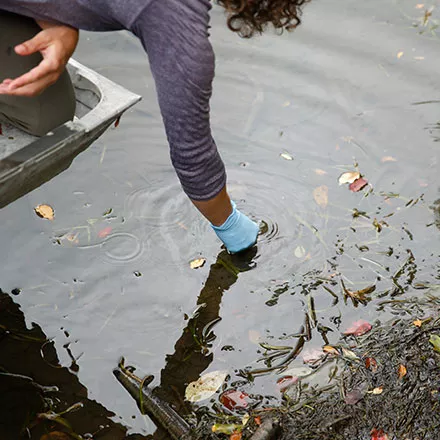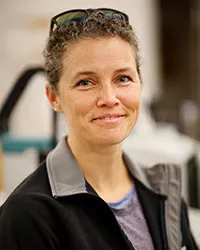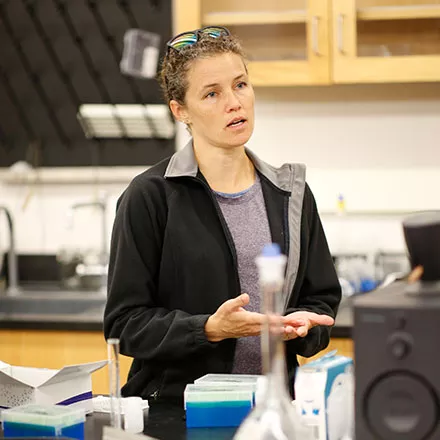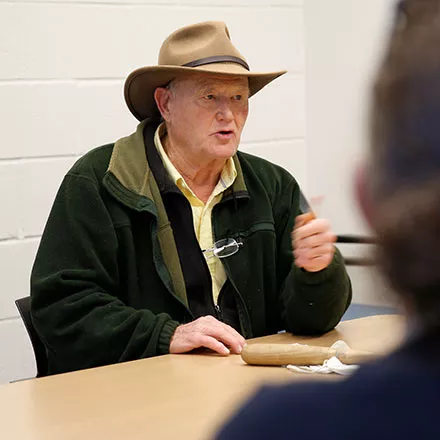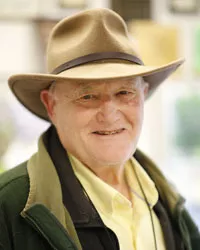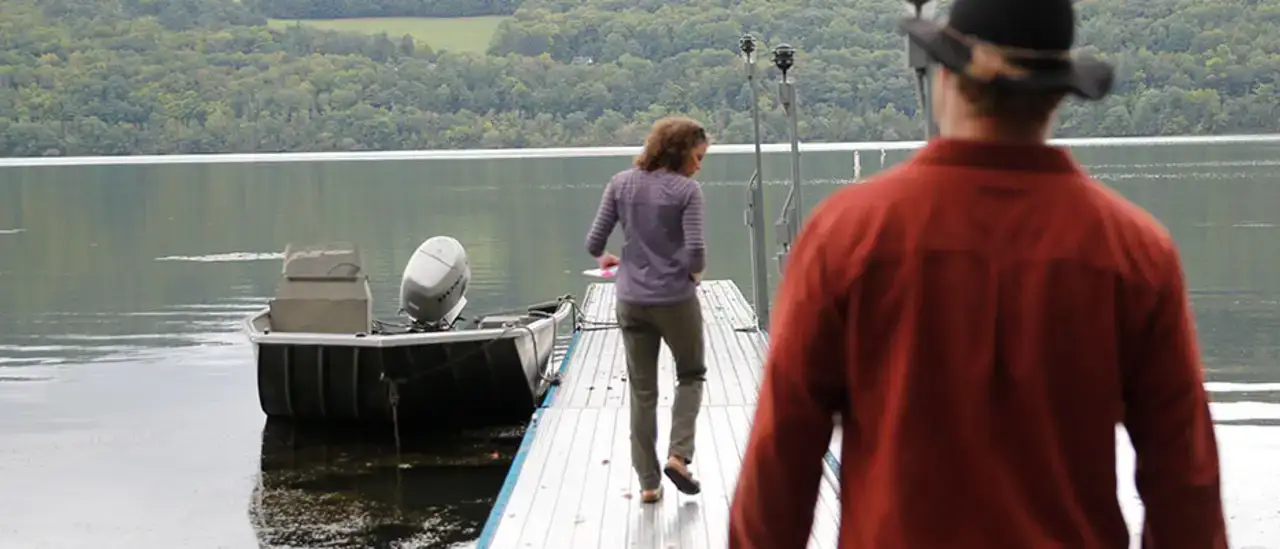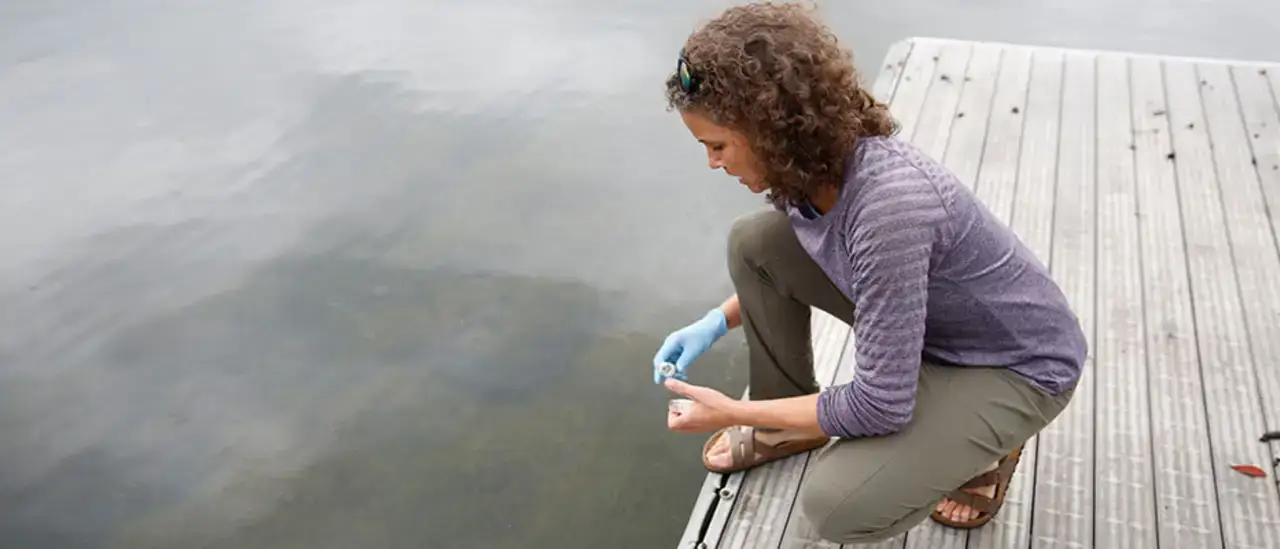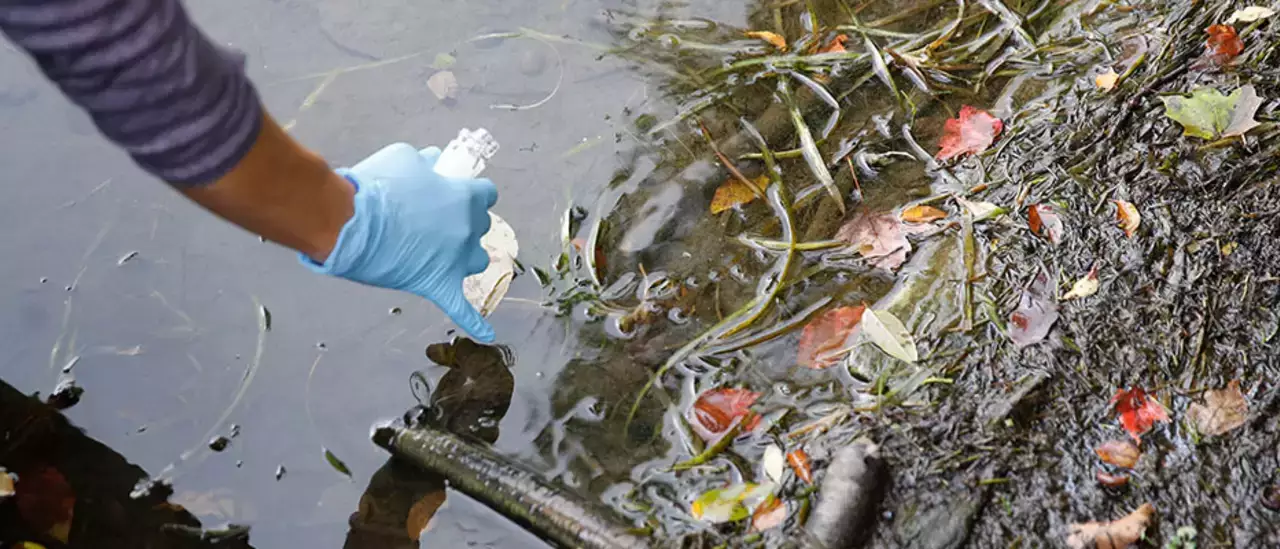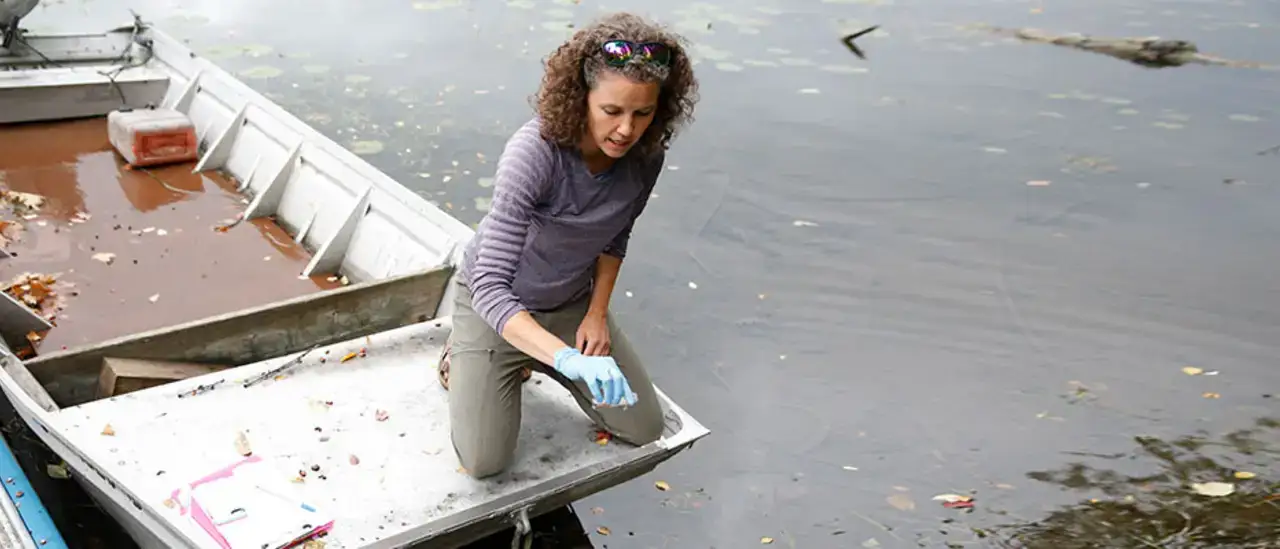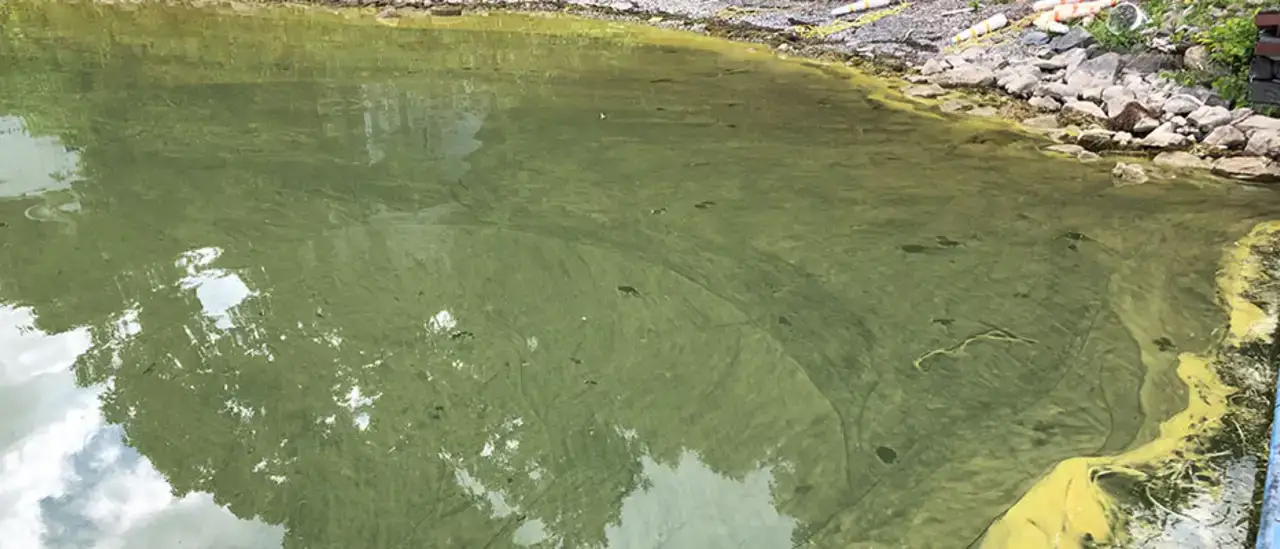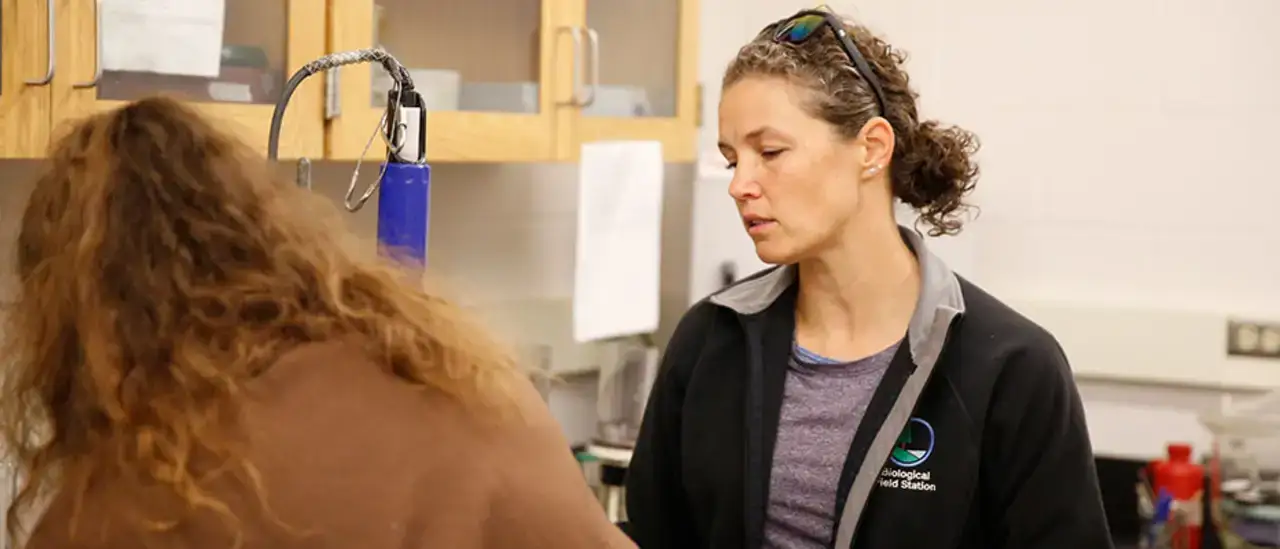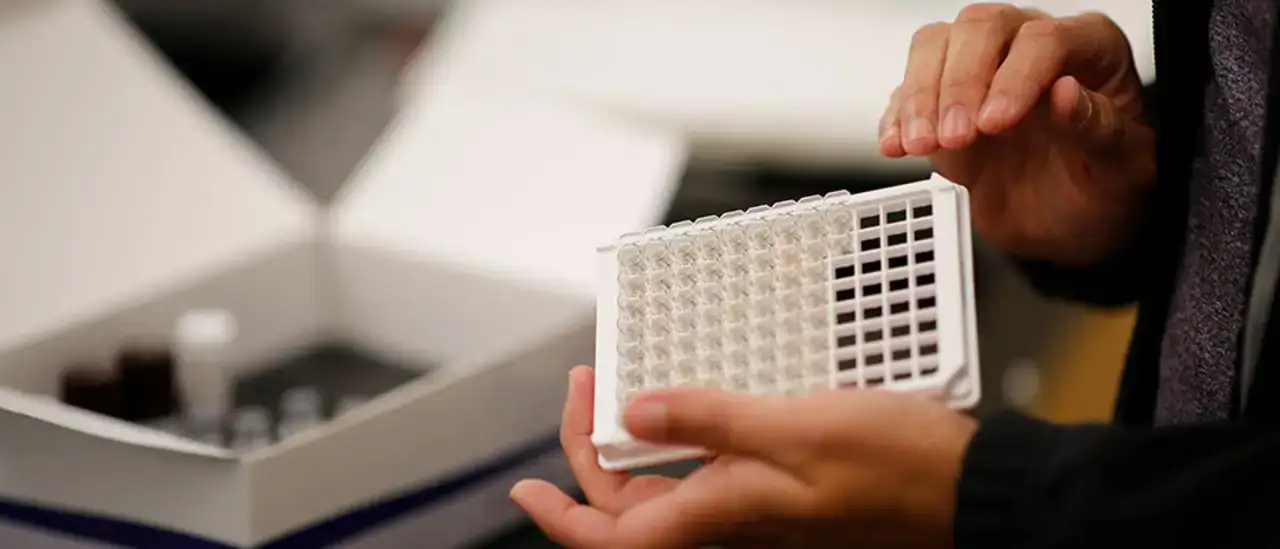An unprecedented increase in the presence of harmful algal blooms, or “HABs,” on Cooperstown’s Otsego Lake this summer shut down swimming areas and alarmed the community.
Thanks to a generous grant announced last month, researchers at SUNY Oneonta’s Biological Field Station are closely monitoring these blooms in an effort to better understand them and share that knowledge with the community, mitigating risk as well as concern.
On Aug. 24, the Fernleigh Foundation announced that its Board of Directors had approved a $9,695 grant for the Biological Field Station to conduct twice-a-week testing on Otsego Lake to better monitor the effects of HABs, which occur when colonies of algae and cyanobacteria grow out of control, or “bloom,” and produce toxins that can make people and animals very sick.
Illnesses caused by HABs, though rare, can be debilitating and even fatal, particularly for household pets. People and animals can get sick if they ingest contaminated water; eat contaminated fish or shellfish; or swim, wade or play in or near contaminated water.
Regular testing of the water is key to preventing problems.
“It is important that science and data drive our decisions about the impact of the HABs,” said Jane Forbes Clark, president of The Fernleigh Foundation. “There is not a local organization better equipped to do that than the Biological Field Station.”
“They Don’t Want to Be Scared”
The Fernleigh Foundation grant has allowed the BFS to afford expensive lab supplies, including HAB toxin test kits, which cost $500 each.
BFS testing of the HABs, led by Research Support Specialist Holly Waterfield, occurs at eight different locations around Otsego Lake: BFS’ Thayer Boathouse, the BFS dock, Cooperstown Country Club, Fairy Springs, Glimmerglass State Park Beach, Springfield Public Landing, Three Mile Point, and at the mid-point of the lake.
It takes Waterfield about two hours to go around the lake and collect samples, which must be frozen and thawed three times before being analyzed.
Test results are then posted on the BFS website and distributed to local officials and community organizations including the Village of Cooperstown, Town of Middlefield, Town of Springfield, Otsego Lake Association and Glimmerglass State Park.
“Scientifically speaking, we want to learn as much as possible about the conditions causing this,” said Waterfield, who was a high school intern at the BFS 20 years ago. “From a public point of view, our research helps people and officials understand what the level of risk is on a daily basis – for instance, should you take your family out on the boat today? Should you avoid swimming or fishing? They love the lake and still want to be able to use it. They don’t want to be scared of it.”
The Impact of Global Warming
Bill Harman, Distinguished Service Professor of Biology, Rufus J. Thayer Otsego Lake Research Chair and Director of SUNY Oneonta’s BFS, said this is the worst harmful algal bloom he has ever seen on Otsego Lake. Effects of climate change, such as warmer water, are most likely making the blooms worse.
“The prevailing opinion of my colleagues are that longer seasons of open warmer water in combination with hot days in late summer into the fall are the immediate cause,” Harman said. “It is another real example of global warming having its negative impact on a local level.”
BFS testing of the HABs will continue throughout October. When colder weather arrives in the fall, the HABs will begin to dissipate and then disappear. Until then, Waterfield and other BFS staff will continue to help the community understand them and their risk.
“As we have for many years,” said Jane Forbes Clark. "We again look to Bill Harman and his BFS team to provide us the information we need to best understand the health of our beautiful lake.”
